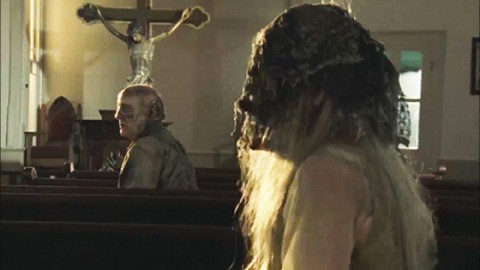TV Protestants

An episode of AMC’s The Walking Dead features a scene in a Baptist church that has a Catholic-looking crucifix. HBO’s new series True Detective includes a scene in which a fundamentalist preacher crosses himself. These are two isolated examples of how the people involved in making television shows and movies don’t know or don’t care about the differences between different forms of Christianity.
I always cringe when I see this kind of incongruity on television or in film. The theology nerd in me wants the media to get it right. Why don’t the producers check their portrayals of religion with somebody who is actually religious?
If I am annoyed by media missteps related to my area of expertise, I can only imagine how medical doctors, lawyers, and police officers must feel. I’m also aware that, on one level, my annoyance doesn’t really matter that much. It shouldn’t be surprising that visual media, in the quest to tell a good story, fail at theological accuracy.




